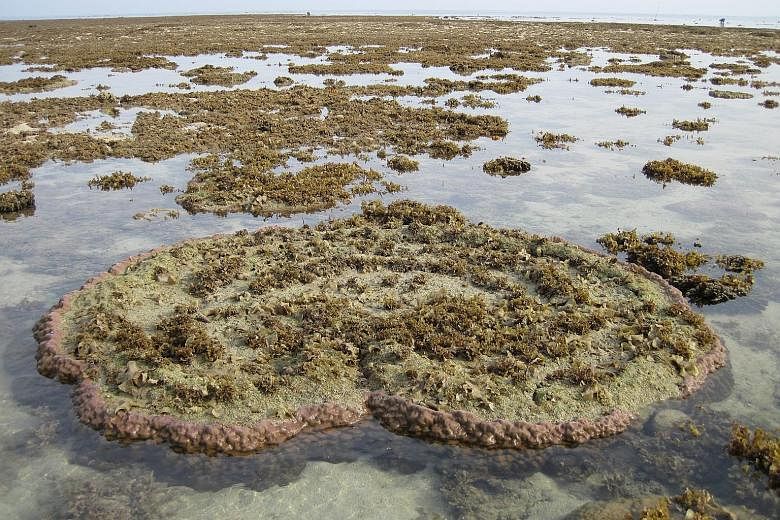As climate change makes its presence felt, sea levels in South-east Asia could rise much more, and more quickly than previously thought, according to new research led by a Singapore scientist.
The study by Dr Aron Meltzner, a senior research fellow from the Earth Observatory of Singapore at Nanyang Technological University (NTU) and his team, found that sea levels in the region fluctuated close to 7,000 years ago - rising as much as 60cm. Researchers say the finding means populations living in low-lying coastal areas face the possible threat of disastrous flooding.
"When it happened close to 7,000 years ago, there was no human-induced climate change going on," Dr Meltzner pointed out.
"A repeat of what we observed... could happen in the future, and if it does, it would occur on top of, and potentially exacerbate the effects of, projected sea-level rise due to climate change."
The study published last month in science journal Nature Communications also involved the Asian School of the Environment at NTU and other institutions in the United States, the Netherlands and Indonesia.
To find out how sea levels fluctuated, the team looked at corals known as microatolls at two sites in Belitung Island, Indonesia.
A microatoll is a circular coral colony in which the top is dead while the lower parts remain alive.
It grows mainly sideways but, during extreme low tide, the top of the coral can be exposed for a prolonged period of time to air, heat and sunlight, causing parts to die.
These form bands on the coral every year - much like tree rings which are used to study weather conditions during different times in history.
The scientists found that there were similar fluctuation patterns at both sites in Belitung and a third one, located 2,600km away in southern China, suggesting that the coral growth patterns reflected regional changes in sea level.
According to the United States National Oceanic and Atmospheric Administration, global sea level continues to rise at a rate of about 3.17mm a year.
The two major causes of this are warming of the oceans (water expands as it warms) and increased melting of land-based ice, such as glaciers and ice sheets.
The oceans are absorbing more than 90 per cent of the increased atmospheric heat associated with emissions from human activity, it said.
Unlike what is happening now, however, the sea level fluctuations which took place close to 7,000 years ago were probably regional in nature, and due to natural causes, with no evidence to show that they were caused by the melting of ice caps and glaciers.
Assistant Professor Chris Gouramanis, who studies the impact of climate change in South-east Asia at the National University of Singapore, said what is worrying about the results of the study is that sea level is shown to vary naturally by up to 60cm in South-east Asia.
"This extra possible 60cm, on top of the predicted sea-level rise as a result of climate change caused by human activity, exacerbates the potential impacts as it is likely to increase both the rate of the sea-level change and maximum height," he noted.
Finding out exactly what caused the fluctuations will be the next step of the study, researchers said.
They have yet to pinpoint the specific weather phenomenon behind the fluctuations.
Said Associate Professor Adam Switzer from EOS, co-author of the study: "What we do know is the period around 7,000 years ago was likely a period of fairly substantial environmental and climatic change.
"However, pinning these fluctuations to a particular climatic system or anomaly is not possible with the records we have to date."
Correction note: This story has been edited to correct the rate at which global sea level rises. According to the United States National Oceanic and Atmospheric Administration, global sea level continues to rise at a rate of about 3.17mm a year. We are sorry for the error.



